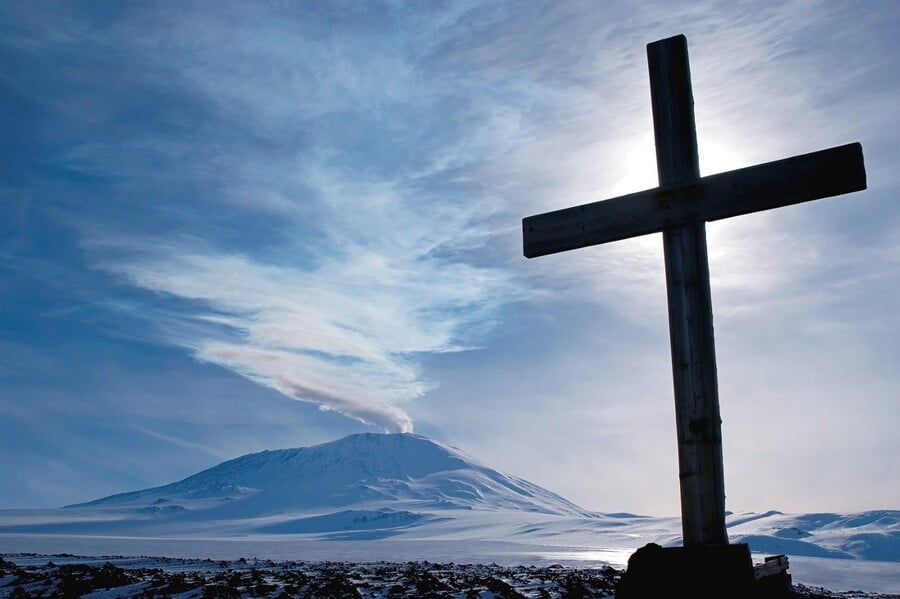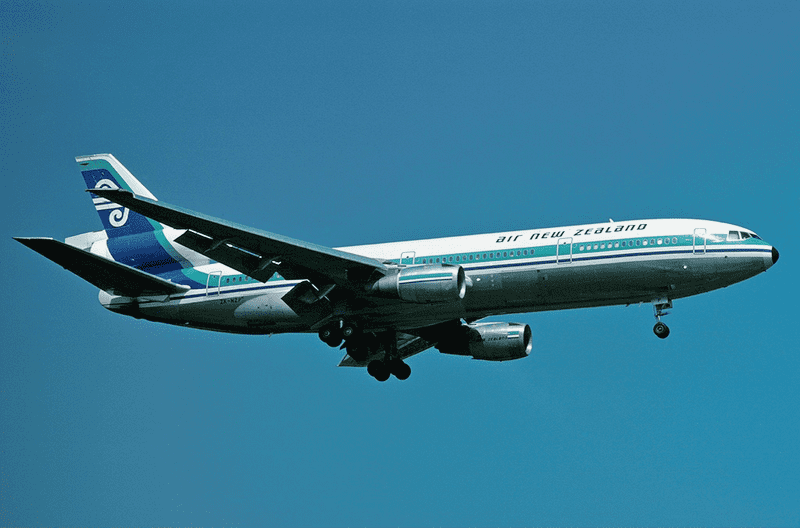It is November 28, 1979, 7:30 in the morning. The passengers are boarding Air New Zealand flight 901 at Aukland airport (New Zealand). It is an unusual flight, since it will return in the afternoon to the same airport with the same passengers on board. The airline is very proud of this flight, as it considers it its flagship. They have promoted the flight extensively through intensive marketing campaigns and have gained the public’s approval. The company has been operating a daily flight for the past two years; it is a round trip to Antarctica. The plane will fly over the Antarctic continent for a few hours without landing and then return to Aukland. This air tour qualifies as a “luxury” trip. The aircraft will provide good food, entertainment and narration by an experienced Antarctic guide.
The aircraft is a 1974 McDonnel Douglas DC-10 with 3 General Electric engines. The crew consists of 20 people, including 3 pilots and 2 flight engineers. There are 237 passengers, all of them enthusiastic and highly motivated, with almost all of them equipped with cameras and film cameras.
About 4500 miles are to be flown. The destination is Ross Island in Antarctica, home to the main attraction of this trip. It is Mount Erebus, an active volcano about 3,800 meters high covered with ice and with a perpetual column of smoke. Then the plane will continue its flight over the narrow McMurdo Arm of the sea that divides the island from the continent and offering breathtaking views.

Polar upwelling – the peculiar Antarctic optical phenomenon
After more than four hours of flight, the captain advises the passengers that the descent to the Antarctic continent has begun. The flight plan calls for a descent to 3,000 feet to obtain a better view of the landscape. At that height, however, a layer of white clouds envelops the plane and prevents visibility. The pilots themselves are completely blinded. In the absence of satisfactory visibility conditions, the captain makes a turn to descend to 2,000 feet and asks the control tower for permission to make another turn and descend another 500 feet.
Unfortunately, the pilots in the cockpit cannot see what is in front of them. The polar haze in Antarctica is a phenomenon where clouds and white snow change the way light reflects and only dark-colored objects can be perceived by the human eye. This means that the pilots cannot see the ice wall of Mount Erebus in front of them, and by the time they see it, it is too late. Six seconds later, the plane crashes into the mountain. There are no survivors.

What happened after the tragedy of flight 901?
Air traffic control had lost contact with flight 901 a few hours earlier resulting in increased concern. By nightfall, when the plane did not return, they had confirmation that something had happened. Two reconnaissance planes were dispatched and spotted the wreckage of the DC-10 on the slopes of Mount Erebus.
The tragedy had a strong impact on public opinion. The families of the victims demanded clarification. The airline declared that the accident had been caused by human error. But further investigations revealed that the night before the flight, new flight coordinates had been set on the plane and the pilots had not been informed. According to the new coordinates, the plane would no longer fly over the stretch of sea separating the island from Antarctica, but instead would fly directly over Ross Island. Unaware of this fact, the pilots thought they were flying in an unobstructed space, and unfortunately, 257 people lost their lives due to the company’s incompetent internal communication management.
During the investigation, the airline company denied any responsibility and managed to obtain a verdict of “air crash caused by human error”.
On the 40th anniversary of the tragedy in New Zealand in 2019, New Zealand Prime Minister Jacinda Arden apologized on behalf of the government for how the airline, which was fully state-controlled at the time, had lied in the accident investigation, shifting the blame to the innocent pilots. Relatives of the victims commissioned a cross to be placed on Mount Erebus close to the crash site in remembrance of this terrible tragedy. The plane crash of Flight 901 was the most severe crash ever to occur in Antarctica. To this day, wreckage of the DC-10 can still be seen scattered on the ice on the slopes of Mount Erebus


